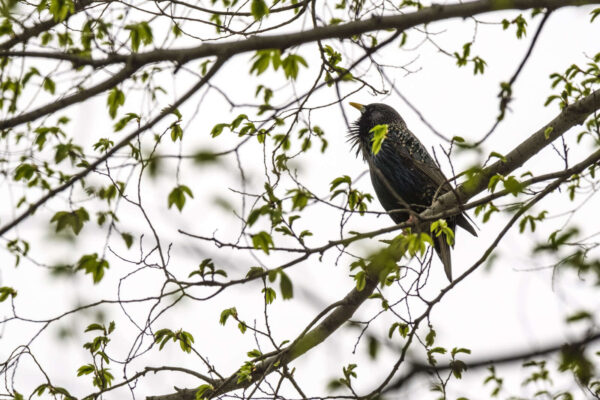
Whatever was sickening and killing local birds earlier in the summer seems to be subsiding and it’s now safe to put bird feeders back out, according to both local and state officials.
“As far as I am aware, we have not taken in or received any calls about said birds in several weeks,” writes Animal Welfare League of Arlington (AWLA) spokesperson Chelsea Jones writes ARLnow. “At this point, it is safe to put bird feeders back out, but we definitely encourage everyone to wash their birdfeeders regularly.”
A press release this morning from the Virginia Department of Wildlife Resources echoes that.
“As of mid-August, reports of sick and dead birds have declined in many jurisdictions, and the Virginia Department of Wildlife Resources (DWR) is lifting its previous recommendation to cease feeding birds in affected areas,” reads the release.
If choosing to put out a feeder or a bird bath, DWR asks that they be cleaned once a week and disinfected with a 10% bleach solution.
Back in June, authorities advised residents to remove their bird feeders as a precautionary measure.
Despite this good news, the mystery still remains on what exactly was causing birds to get sick and die throughout Northern Virginia, D.C., and parts of Maryland.
The mysterious illness seemingly coincided with the emergency of the Brood X cicadas, but Virginia DWR also said that “no definitive cause(s) of illness or death have been determined” at this time. There was no mention of cicadas in the DWR press release.
DWR has ruled out a number of potential causes, though, including salmonella, chlamydia, avian influenza virus, West Nile virus, herpesviruses, and coronavirus. Toxicology tests have also been negative for heavy metals, common pesticides, and herbicides. Other diagnostic tests are ongoing, the release notes.
In May, reports from across the region came into authorities about birds suffering from eye issues including swelling, crusting, and discharging that was potentially leading to blindness. Along with other neurological symptoms, this caused a significant number of even healthy juvenile birds to die. AWLA set up an online form, asking residents to report dead birds.
The issue was of great concern to authorities and naturalists across the area.
“We are very saddened by this ongoing issue and are hopeful for more finding soon,” AWLA Animal Control Chief Jennifer Toussaint told ARLnow back in June. “These birds are federally protected for a reason, they are a national treasure and vital to our ecosystem.”
While whatever was happening impacted much of Northern Virginia, reports of bird deaths were the highest in Fairfax and Arlington counties. This is what made this particular occurrence rare.
“Bird mortality events are not uncommon,” reads DWR’s release. “Several aspects make this particular event unique, including the specific age and species of the affected birds, the extensive geographic scope, the duration of reported mortalities, and the fact that the initial reports were received from an urban area.”

